(This article originally appeared in the April 1977 edition of the Peninsula Group magazine, and is reproduced here with their permission.)
He lives in a large house in Kowloon Tong, one of Hong Kong’s fashionable residential districts, watching his plants grow and talking to his parrot who, in-between squawks, utters a civilized “hello”. He’s a big man, hearty despite his 85 years. And he smokes two packs of cigarettes a day. “But I don’t inhale,” he says. “It’s not good for you.”
Clifton James Triggs was, perhaps, The Peninsula’s longest-staying, non-paying resident. As Chief Engineer of The Hongkong and Shanghai Hotels Ltd., he and his family lived “for some 35 years” in The Peninsula. If anyone knows The Pen, its ghosts, its every nook and cranny, and those of The Repulse Bay Hotel and the old Hongkong and Peak Hotels, Mr Triggs does. “My memory is not good,” he apologises, occasionally referring to a list he has made of important events during his career with the company. In fact, his memory is very good.
He remembers James Taggart, the company’s director for many years before his retirement shortly before the Second World War, as a kind, generous man with a fine mind. “Because he was a Scotsman,” he adds with a smile. Mr Triggs is Scottish, too, in part. His mother was Maori and Scottish and his father, English. He was born in 1892, in Mandalay, Burma, and spent 14 years there before being sent to Dumbarton, Scotland, to study engineering. In 1924, while working on a merchant ship as First Engineer, he met Mr Taggart, who was sailing to Indonesia to purchase French liqueurs for the hotels in Hong Kong. “I got to know him,” he recalls, “and he offered me a job”.
“’How much are you getting?’ he asked me.
“’$2,000.’”
“’Suppose I double it?’ he asked. “Will you work for me?’
“”Certainly, sir,’ I said, and he gave me his card and said I could stay in The Hongkong Hotel when I got off the ship. When I arrived in Hong Kong I had no money. He was so kind to me. Gave me a month’s salary in advance and showed me where I could stay. Of course, I showed him I could work, too.” Thus began an excellent working relationship.
After one year, Mr Triggs was made Chief Engineer of the Company and Mr Taggart doubled his pay. “He was a good man,” says Mr Triggs. “Do you know, when he retired, he gave me 500 shares in the company. I still have them today. Though now, of course they’re worth much more than they were then.”
The year Mr Triggs was made Chief Engineer, 1925, was an eventful one for Hong Kong and The Hongkong and Shanghai Hotels Ltd. “There was a big strike that year,” Mr Triggs recalls. Hong Kong labourers, believing they could get higher wages in China, quit their jobs and attempted to cross the border. “When some of our staff walked out I remember being in my quarters and finding out there was no one in Repulse Bay to manage to heating system. I had to find someone and show him how to operate it so the guests could have hot water.” That was a minor event for the company compared to a fire the same year that destroyed a good part of the old Hongkong Hotel. “That used to be the hotel in Hong Kong.” Mr Triggs remembers. “All the big shots in town would meet and entertain there. After the fire, it was renovated and they made an even better hotel of it, with a roof garden and modern architecture.
The pride of the company, however, was no doubt The Majestic Hotel in Shanghai. Sent up there to repair the floating dance floor in the ballroom, Mr Triggs remembers it as a “beautiful hotel. Its art and designs were gorgeous and most expensive. And it had a lovely garden with beautiful flowers. It used to be called The Paradise of the East.”
In late 1925, The Peninsula was nearing completion when labour unrest in Shanghai led to strikes against foreign-owned business. The Coldstream Guards were sent out to protect British interests and they commandeered The Peninsula before it had the chance to open. “When they handed the hotel back to us,” says Mr Triggs, “we practically had to completely renovate. I think they must have kept their guns in the bathtubs, which had to be replaced on all floors. And the army boots were very rough on the floors. The army paid for the repairs, but it took some time before they left and the hotel opened in 1928.
“That was a day!” he reminisces. “December 11th, 1928. They made more money that day than they ever expected to make. People came in to buy drinks and food. A lot of the food had been imported. Everyone was enjoying it.”
During the Second World War, the Japanese occupation army took over The Peninsula and The Repulse Bay Hotel. Mr Triggs meanwhile moved his family out of The Peninsula and into his sister-in-law’s house on Hong Kong Island. “When the Japanese took over,” he recalls, “I went home to stay put and after one week they came up and took me in a truck to The Peninsula with bayonets all around me. They were very nice to me. They knew I was shivering in my pants. They showed me the refrigeration system. A very nice officer drew his sword and saluted me. I thought he was going to cut off my head. But instead he said to me, in perfect English, ‘You see this machinery was damaged by somebody. I want you to make it right.’ I said yes and then he became very friendly. He was very stern at the start.
“So I examined the machinery. I told him the material I wanted and got all the machinery running in one week’s time – the refrigeration, plumbing, sewerage had all been damaged. I worked for them for one year. But they didn’t trust me. Wherever I went, they always had a guard go with me."
After a year, Mr Triggs got permission to go with his family to Macau, where he spent the remainder of the war working as an independent engineer. When the Japanese had gone, he returned to Hong Kong, and to the Company.
One of the Company’s casualties from the war was The Peak Hotel, which once stood near where the Peak Tower now stands. Mr Triggs remembers it as a very comfortable hotel, with fire places in every room, resembling an old English home. It had to be abandoned during the occupation because of the heavy shelling it had undergone during the fighting. After the war, the property was sold and the building torn down.
Mr Triggs remembers Hong Kong’s labour strike of 1962, when he had to recruit his wife and her friends to help out in the kitchen of The Peninsula, much to the guests’ delight.
Former Manager of The Peninsula, Mr. Leo Gaddi, placed a
chef's hat on Mr. Trigg's head as he put the finishing touches
on his daughter's birthday cake in the Hotel's kitchen.
He remembers intrigues in the hotels and other events, which seem rosier in retrospect, such as the time a disposal pipe burst over him in The Repulse Bay and he had to make a beeline for the beach.
The charm and graciousness of The Repulse Bay Hotel remain to this day,
over 20 years after this photograph was taken on the Hotel's Verandah.
In 1968, he fell from a ladder at home and broke his leg. Though the company was still growing, with the construction of the new Hongkong Hotel, and needed a man of his experience, it was too difficult for him to manage. After 43 years with the Hongkong and Shanghai Hotels Ltd., Mr Triggs retired.
Thanks to the late Dan Waters for holding on to these old magazines, to Annemarie for finding them a new home, to Phil for scanning and transcribing the article, and for The Peninsula for letting us give the article a second lease of life here on Gwulo.
If you remember Mr Triggs, please let us know in the comments below!
|
Readers ask for information (photos, facts, memories, etc.) about:
New on Gwulo.com this week:
|

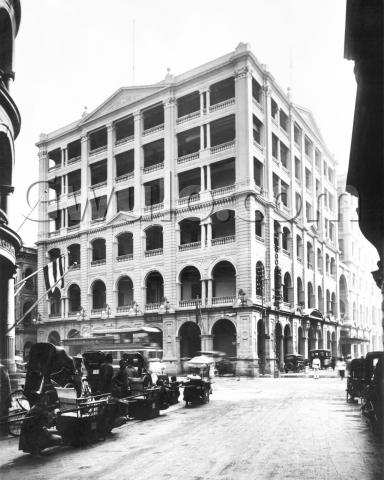
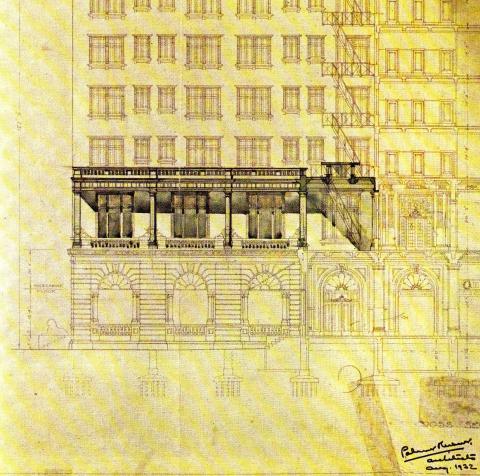
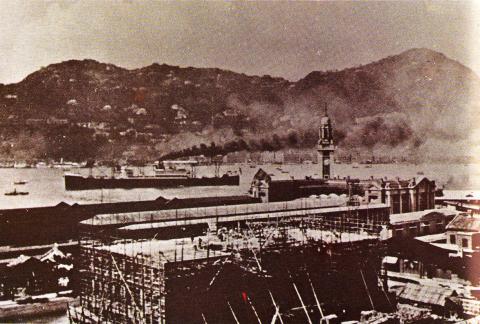
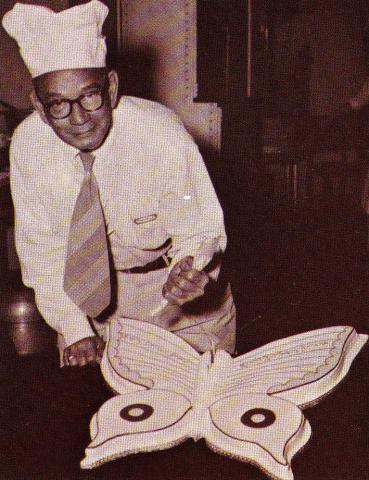
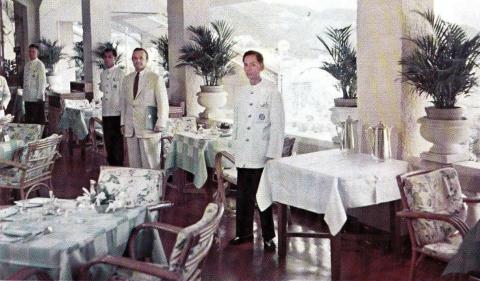
Mr. Triggs remembers
Friends of my parents, Hilda and Moses Cohen were renting the downstairs flat of Mr. Triggs' house in Kowlooon Tong, and we went there occasionally. I remember his daughter Betty had a pet monkey (loosely chained to a tree) and this rascal jumped on me and bit me! Had to have a Tetanus shot as a result. In those days Kowloon Tong was a lovely place (may still be as I have't been there in ages!) and to live in a house with a garden was a real luxury.
Does anyone remember their children, Elaine (youngest), Eddie and Meyer? Elaine now lives in Israel and I believe both Eddie and Meyer are in UK. Sadly the parents have since passed.
Barb Mackenzie
Kowloon Tong
hi Barb
Kowloon Tong is a bit ruined these days by the proliferation of schools that have taken over many of the old buildings. It's great they're still being used but the roads seriously struggle to cope with all the cars belonging to parents dropping off and picking them up. If you cone back, make sure you visit during school holidays and you may be able to recapture some of its old allure.
can you remember Mr Triggs' address? It would be nice to see if it's still around.
regards
Phil
Mr. Triggs remembers
Hi Phil
Thanks for the update on Kowloon Tong. Sad really.
I also knew Eugenia Chen (Susie) her mother was Russian (formerly a ballerina) and her Father was a well known QC Percy Chen. They lived not far away, also in a lovely old house which could have been right out of the Kent countryside... 36 Somerset Road???
Regarding Mr. Trigg's house - I don't remember the exact address, but am sure I can locate it as the house/gate image is so clear in my mind. I am going to google map the area as I believe it was a corner house. I have Elaine's email and can contact her to see if she remembers as well.
Regards Barb
Mr. Triggs remembers
Hi Phil again
Just Google Earthed it and I believe it was YORK ROAD. Maybe the 2nd house on right. But it was 61 years ago and my memory is not as good as it used to be!
Regards
B
Percy Chen's house
According to this web page in Chinese, Mr. Percy Chen's house was at 16 Somerset Road, Kowloon Tong. He sold it to philanthropist Mr. TIN Ka-ping around 1964.
Barb, is Eugenia Chen or any of Percy Chen's family still in Hong Kong? Thanks.
Kowloon Tong
Thanks for the update Barb. It's always interesting to find out about former residents.
regards, Phil
Mr.Triggs remembers
Susie Chen got married and emigrated to the States I believe. I lost touch.
Thanks for the correction on the house number.
B
I remember the article "Mr
I remember the article "Mr Triggs Remembers" as I designed the House magazine for the Peninsula. The origional drawing for the façade of the Peninsula was later used for Menus and other magazine articles as well as greeting cards.I'll post a couple of photos of them.
In February 1940 my father
In February 1940 my father was part of a syndicate based in the Lane Crawford Bakery Department which won a large sum of money in a racing sweepstake. The biggest indiviudal winner was "Mr. C. J. Triggs of the Bakery Department" (SCMP, 21 Feb, p. 8) who won $40,000.
I wonder if he was on secondment from the Peninsula? Or if the reporter was told he was a Lane Crawford employee because he shouldn't really have been allowed to buy a share in the ticket?